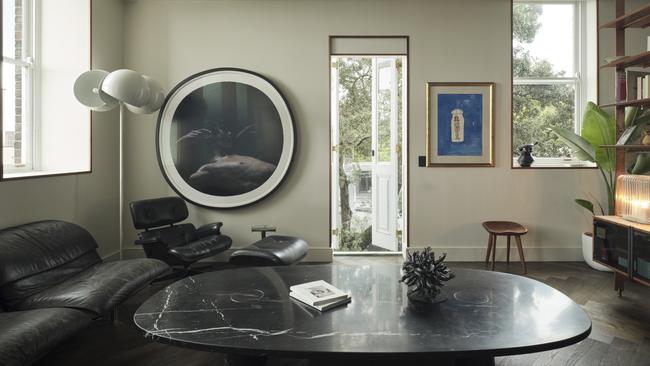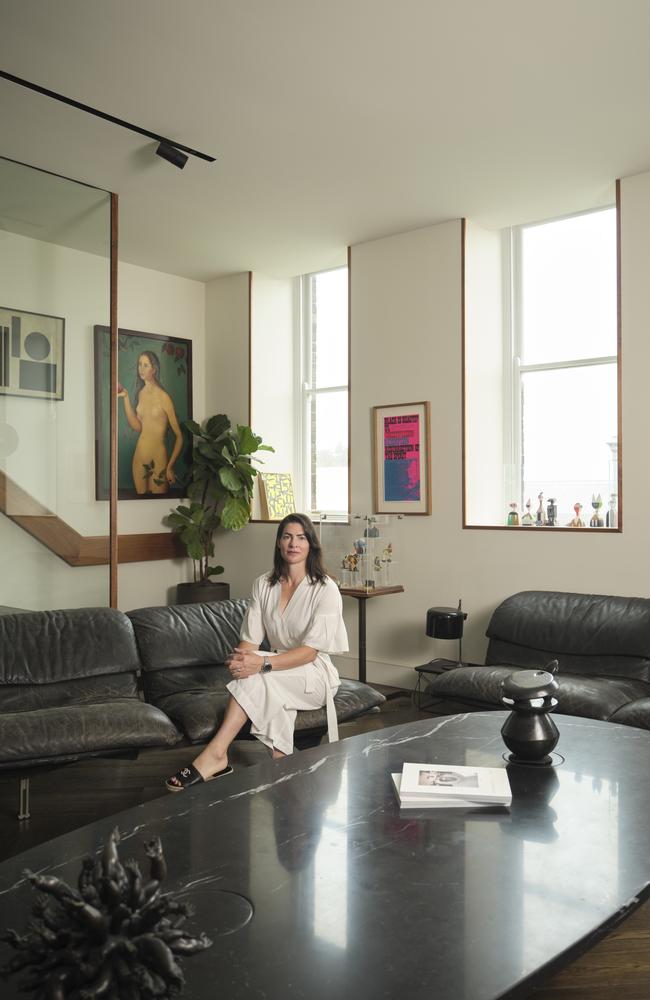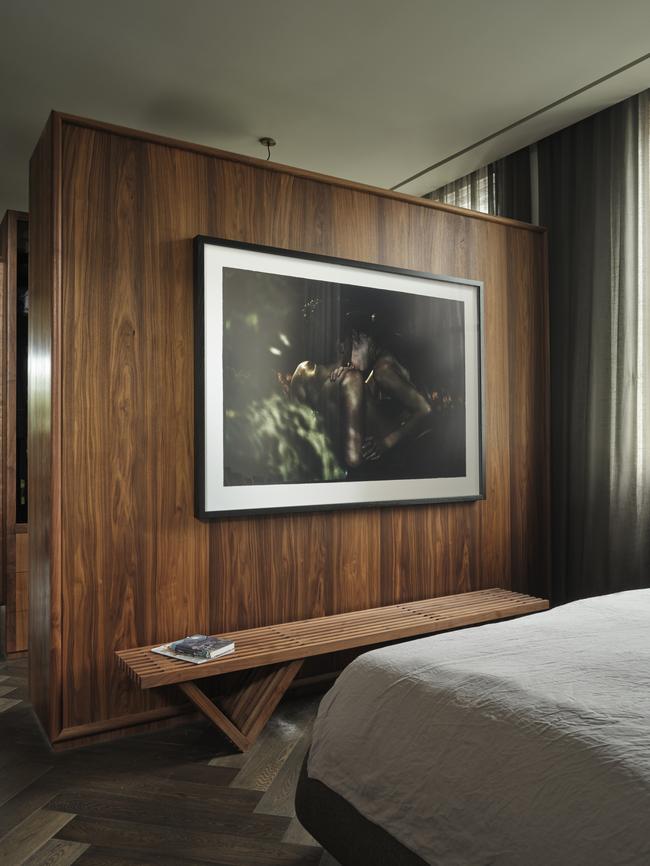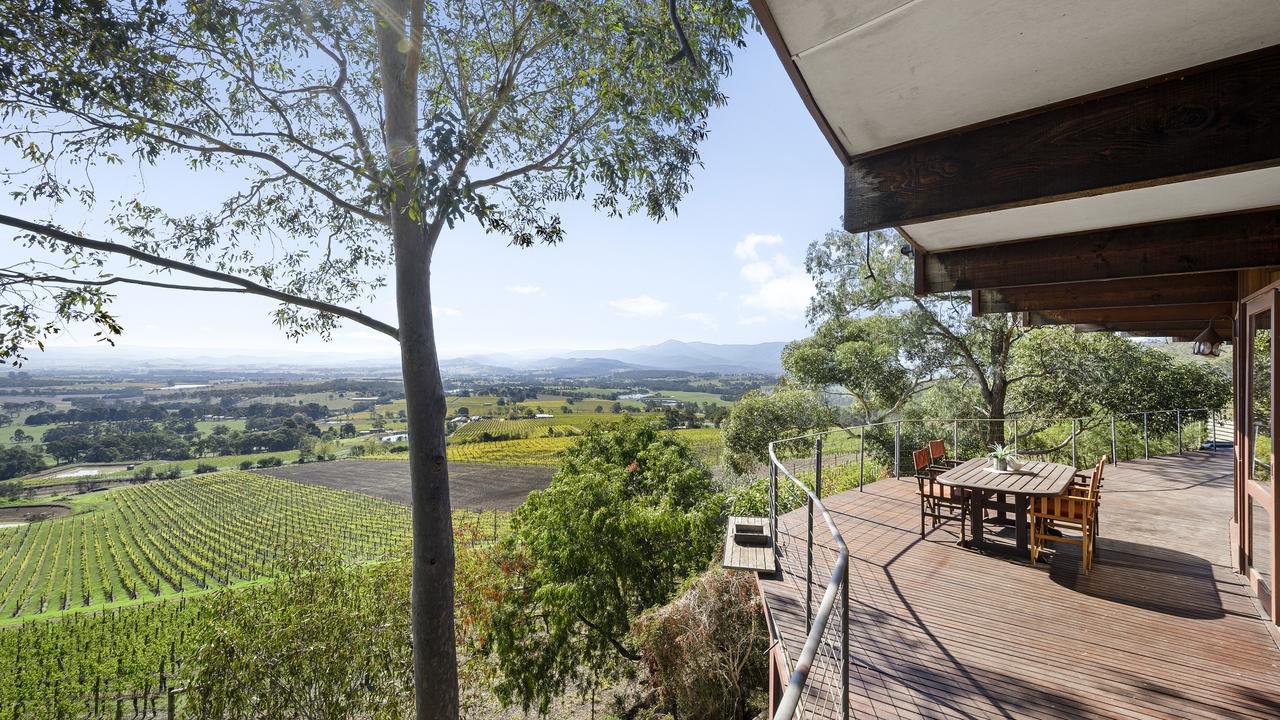How this art collection stands as a testament to a family’s love
What can the art we love tell us about a person? For Naomi Tosic, her family home stands as a lasting embodiment of the love she shared with her husband, Boris, long after he has gone.

Naomi Tosic has just finished hanging a work by her dear friend Stanislava Pinchuk, by herself. She would never have done that in the past. Not because she couldn’t, but because it’s something her husband Boris Tosic would have done.
Boris died of motor neurone disease in January 2023, and the art that fills their home – a five-level former hat factory in Sydney’s leafy Paddington that he built as a love letter to Naomi and their family – tells all their stories, but Boris’s especially.
“The art is such a present reminder of all the points of his life,” Naomi says. “It’s like a series of data maps and I can trace Boris through time with them.”
There’s a Bill Henson photograph of two lovers embracing that hangs above their bed, which Boris bought in 2015. “He told everyone, ‘That’s how I first kissed Naomi’, and it was so beautiful.”
When Naomi was pregnant with their first son, Mali, Boris bought a painting of traditional women’s birthing grounds by Ningura Napurrula, a Pintupi woman. A Minnie Pwerle that once hung in their old kitchen forms the backdrop to many family photos.
Every artwork offers a similar story – of family milestones, travels, encounters. “None of this is for aesthetics, it’s entirely for emotion,” Naomi says. “And I love that about Boris. I think that’s what he taught me about art – that it’s entirely about emotion, and when I look at it, that’s exactly what I feel. Art was so important to Boris and the journey he was on, and then we got to do it together.”

Boris arrived in Australia at 25, jumping ship from the navy and not speaking a word of English. “Art was in his DNA and yet wasn’t his birthright, because he grew up in a very poor, socialist Yugoslavia,” Naomi says.
She recounts Boris’s early memory of spotting a Julije Knifer painting hanging behind the Yugoslavian president Tito during a televised address, not knowing who or what it was, but recognising it was something special. Decades of hard work and success later, several Knifer works now hang in their home.
“Boris didn’t feel like he belonged, as an immigrant tradie, yet buying art, he said was like, ‘I can’t believe how validating it is as a human’.”
Boris built their home with art in mind, and their friendships with artists such as Don Cameron and Del Kathryn Barton are reflected throughout. In the dimly lit, timber-clad lift shaft, a bespoke 15-panel collage by Barton appears almost like a peep show.
In the kitchen, a portrait of Boris, also by Barton, gazes out at the treetops. At the far end of the room, again by the windows, is another Henson photograph. This one is of a young boy in recline; Naomi bought it for Boris as a housewarming gift. “There are five boys in our family – a lot of male energy – so I love it for that reason. It’s honouring that beautiful maleness, but it’s a soft masculinity as well.”

In the bedroom downstairs, a third Henson photograph of two lovers reclining completes their story. “This one is more poignant,” she says. “It’s like my tenderness for Boris, with him being unwell and not able to move. But it’s still so beautiful and sensual. And that was Boris.”
Two months after Boris died, the last artwork he purchased arrived. It was an enormous screenprint by Sister Mary Corita Kent that compels all those who stand in front of it to “POWERUP”.
“It’s the most beautiful thing, just to almost come from the other side. Mali and Quinn and I were so new in our grief, and fearing this moment. But when I showed them this work, we had a whole conversation about how we feel so devastated and lost without him but this is his message to us – to power up and not just punch through.
“No one taught Boris about art. He just learned through experience, exposure and trusting himself. That’s what’s beautiful. He’s teaching us and leaving breadcrumbs for us to go on.”
As Naomi Tosic and her children continue to grieve, the art that she and Boris collected, lived with and loved provides lessons in how to remember and to heal.


“They talk about grief as something that sits in the different limbic areas of the brain and everywhere in the body. When they map the brain with MRIs they can see it is always trying to work out where the person you love is – their proximity and how easy it is to access them,” Naomi says. “As soon as that is broken, the body is untethered and in grief. Boris isn’t here but it’s almost a tangible thing I’m doing with the art; what I process in my grief. The art is helping me do that.”
This is an edited extract from Collecting: Living With Art by Kym Elphinstone with Jo Higgins (Thames & Hudson, $80). Photography by Dave Wheeler.



To join the conversation, please log in. Don't have an account? Register
Join the conversation, you are commenting as Logout